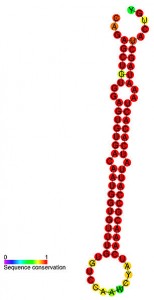 Hosts: Vincent Racaniello, Alan Dove, and Rich Condit
Hosts: Vincent Racaniello, Alan Dove, and Rich Condit
Vincent, Alan, and Rich review association of an interferon-induced protein with severe influenza, and stabilization of HCV RNA by a microRNA.
Click the arrow above to play, or right-click to download TWiV 180 (71 MB .mp3, 99 minutes).
Subscribe (free): iTunes, RSS, email
Links for this episode:
- IFITM3 and severe influenza (Nature)
- Genetics of flu susceptibility (EurekAlert!)
- Stabilization of HCV RNA by Ago2-miR-122 (PNAS)
- Clinical trial of anti-mIR-122
- Sandman on H5N1
- Hu’s on first (jpg) and original (YouTube)
- TWiV on Facebook
- Letters read on TWiV 180
Weekly Science Picks
Alan – Micro Empire (Vimeo)
Rich – Census of marine life
Vincent – Pinterest
Listener Pick of the Week
Mark – The Secret Life of Plankton (YouTube)
Send your virology questions and comments to [email protected].


Thanks for interesting discussions. Just a comment on genetic resistance to influenza and the discussion on case fatality ratios for H5N1. If a significant fraction of the human population would be resistant to H5N1 this should be taken into consideration before estimating the potential consequences of a H5N1 pandemic on the basis of a case fatality ratio calculated by means of diagnosed cases. Similarly, the low prevalences observed in serosurveillance studies might then also partly reflect genetic resistance rather than low level exposure. An interesting question would be if there is a genetic component behind the fact that influenza epidemics have so far been restricted to subtypes H1-3?
A brief comment on rabies: the genotype 1 rabies virus usually sustains itself in an endemic cycle in different carnivores according to geography and species composition. Bats may carry genotype 1 but are not needed as reservoirs; however they are reservoirs of the specific bat genotypes, which may cause disease in various animals and humans. Fortunately, the basic reproduction number of rabies virus is low, primarily due to the particular mode of transmission, restricted tissue tropism and long incubation time. Let’s hope that the path to a putative, aerogenically transmitted virus is long and with many obstacles.